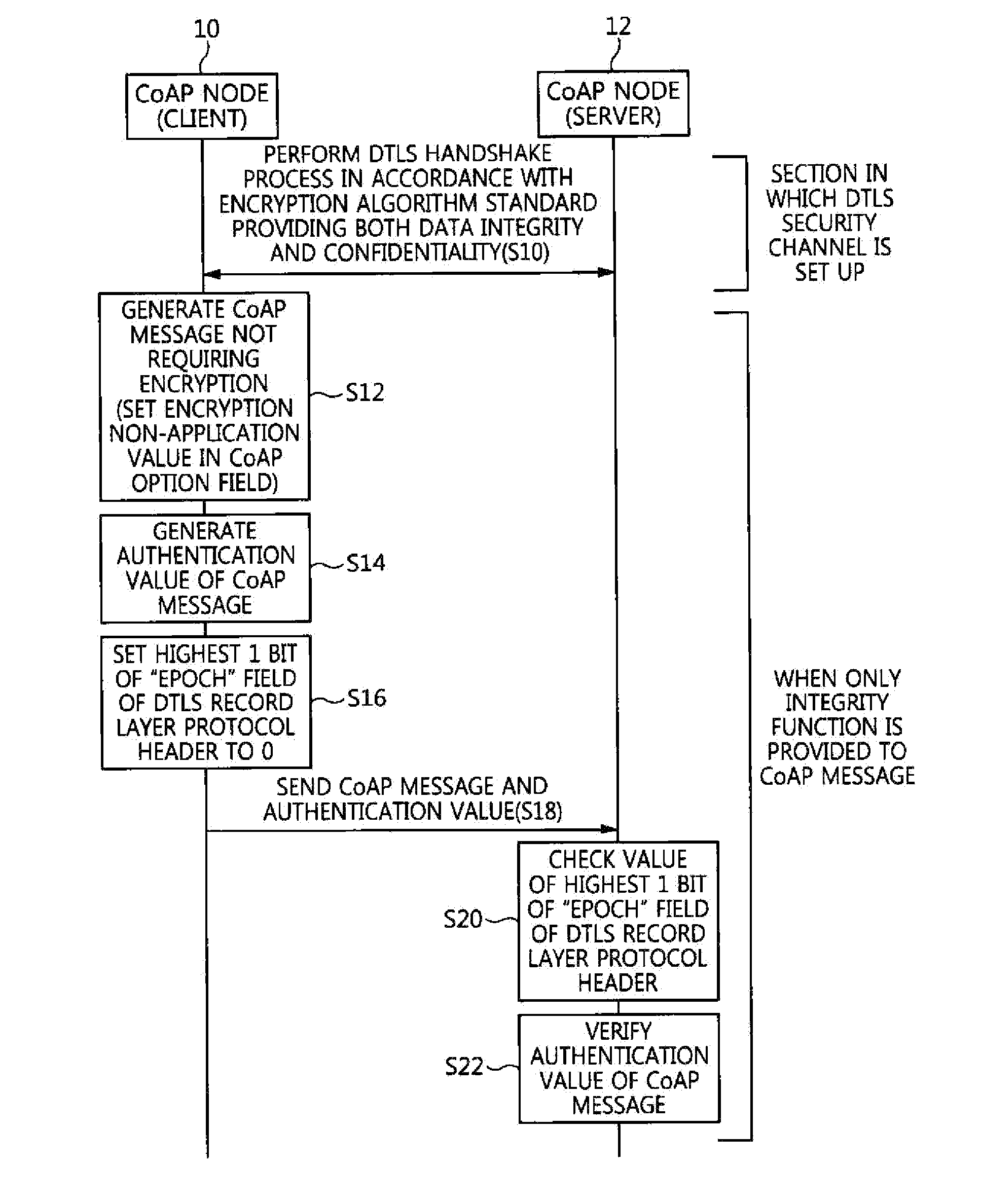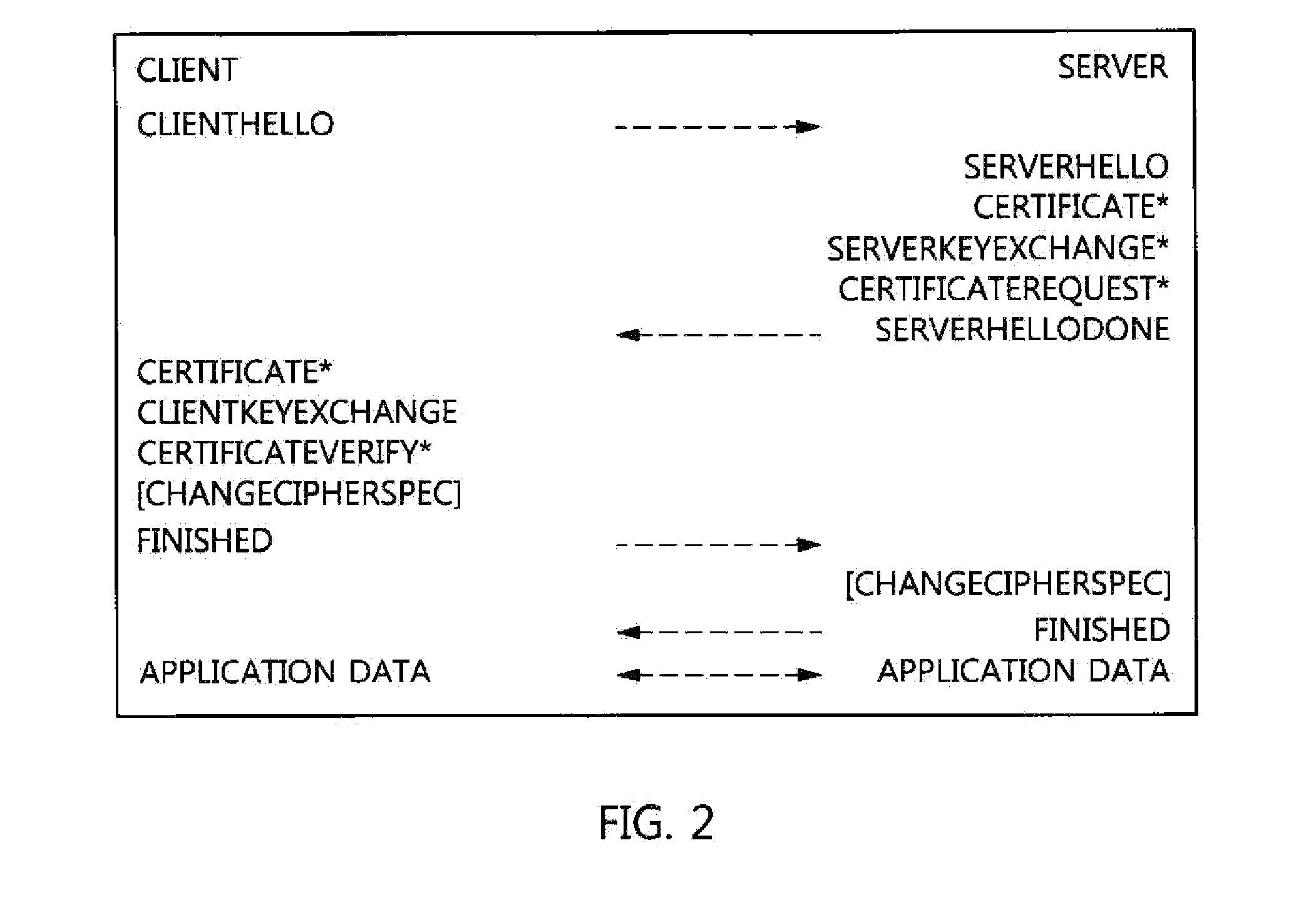Method of selectively applying data encryption function
- Summary
- Abstract
- Description
- Claims
- Application Information
AI Technical Summary
Benefits of technology
Problems solved by technology
Method used
Image
Examples
first embodiment
[0068]FIG. 4 is a flowchart illustrating a method of selectively applying a data encryption function according to the present invention, FIG. 5 is a diagram illustrating a process of generating an authentication value in the AES_CCM that is employed in the description of FIG. 4, and FIG. 6 is a diagram illustrating the configuration of a DTLS record layer protocol header that is employed in the description of FIG. 4.
[0069]A case where only an integrity function is provided to a CoAP message is described in the following description of the first embodiment of the present invention.
[0070]First, CoAP nodes 10 and 12 perform a DTLS handshake process using “TLS-PSK-WITH-AES-128-CCM-8,” i.e., the basic DTLS encryption algorithm standard of the CoAP, in order to protect a CoAP message at step S10. Hereinafter, the CoAP node 10 is referred to as a “CoAP client,” and the CoAP node 12 is referred to as a “CoAP server.”
[0071]As described above, once the DTLS handshake process has been terminat...
second embodiment
[0078]FIG. 7 is a flowchart illustrating a method of selectively applying a data encryption function according to the present invention, and FIG. 8 is a diagram, illustrating the encryption generation procedure of AES_CCM that is employed in the description of FIG. 7.
[0079]First, the CoAP nodes 10 and 12 perform a DTLS handshake process using “TLS-PSK-WITH-AES-128-CCM-8,” i.e., the basic DTLS encryption algorithm standard of the CoAP, in order to protect a CoAP message at step S10.
[0080]As described above, once the DTLS handshake process has been terminated, the CoAP client 10 and the CoAP server 12 have been prepared for the exchange of CoAP messages. That is, a DTLS security channel is set up between the CoAP client 10 and the CoAP server 12.
[0081]Thereafter, in the second embodiment of the present invention, both integrity and confidentiality functions are provided to a CoAP message. Accordingly, the CoAP client 10 generates a CoAP message that needs to be encrypted and sets the ...
PUM
 Login to View More
Login to View More Abstract
Description
Claims
Application Information
 Login to View More
Login to View More - R&D
- Intellectual Property
- Life Sciences
- Materials
- Tech Scout
- Unparalleled Data Quality
- Higher Quality Content
- 60% Fewer Hallucinations
Browse by: Latest US Patents, China's latest patents, Technical Efficacy Thesaurus, Application Domain, Technology Topic, Popular Technical Reports.
© 2025 PatSnap. All rights reserved.Legal|Privacy policy|Modern Slavery Act Transparency Statement|Sitemap|About US| Contact US: help@patsnap.com



